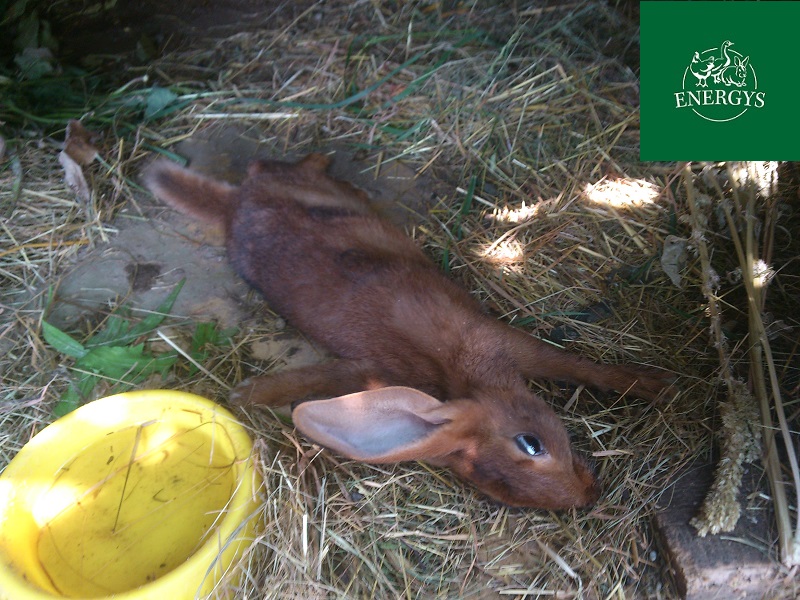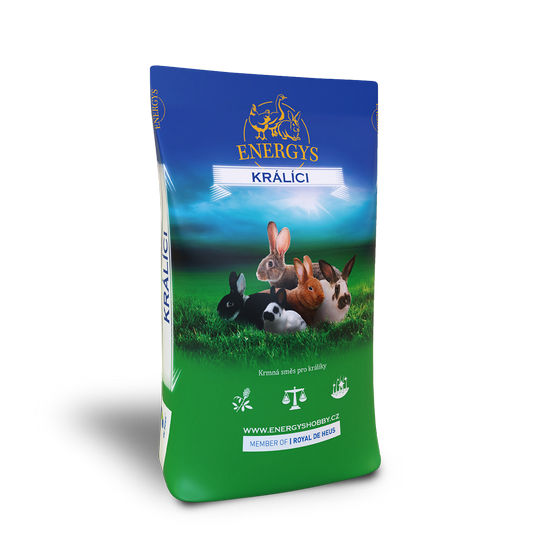Rabbits
Poultry
Laying hens
Quails
Guinea pigs
Pigs
Ostriches
Sheep and goats
Pigeons
Pheasants
Forest animals
Rabbit plague – rhd or vhd (viral haemorrhagic disease of rabbits)
In the following article we will discuss rabbit plague – rhd or vhd (viral haemorrhagic disease of rabbits).
Clinical signs and occurrence
First, a sudden high mortality is observed. With prolonged disease development, rabbits may have a high temperature and a bloody nasal discharge may be observed.
The disease occurs in both breeding females and fattening rabbits. Mortality can be as high as 90 % with an incubation period of only 48 hours. Animals that recover are resistant for 6 months. In the external environment, the virus survives for a long time and is extremely resistant. It is not affected by frost or high temperatures above 30 °C. Viruses also form several strains. Sick rabbits shed the virus in all secretions, including urine and faeces.
Spread of the virus
Rabbit plague is easily spread by direct contact between animals; the virus can enter the rabbit’s body through the nasal mucosa or conjunctiva. Considerable resistance in the environment means that the plague is easily spread indirectly, through feed, water, bedding and utensils. Rabbit plague virus is spread directly by stinging insects. Flies that have come into contact with infectious material – faeces or dead rabbits – spread the virus mechanically on their bodies and in their digestive tracts; anything that such a fly has sat on or defecated on is infectious to other rabbits. The breeder can also be a mechanical vector.
Prevention
The only prevention is vaccination with Pestorin, Pestorin mormyx (combination vaccine), Nobyvac, Castorex, Morin. Consult your veterinarian for the most effective vaccination schedule. Vaccinations should be repeated regularly (e.g. every 4 months).

New form of rabbit plague RHDV2
It has been present in Europe since 2010 (first in France) and in the Czech Republic since 2017. Interestingly, unlike the classical plague, it can also affect rabbits in addition to rabbits. The incubation period is 3-6 days. The mortality rate is 60-100 %. It is quite different from classical plague and is therefore considered a distant serotype. The virus is very resistant in the environment. Like classical plague, it survives in freezing temperatures. It is spread by direct contact, water, feed and infected bedding. Blood-sucking insects are also involved in passive transmission. Rabbits of different ages can become infected.
Progress
The course of the disease may be peracute, acute, subacute or in rare cases chronic. The infection is usually peracute (sudden death without clinical signs). The incubation period for RHDV2 is 3-5 days. The acute course is characterised by the sudden onset of clinical signs such as anorexia, apathy, fever or nervous symptoms. Death usually occurs within 3 days of the onset of fever. The chronic course occurs in only a small percentage of infected animals (about 5-10%).
In contrast to classical plague infection, deaths of very young rabbits as early as 15 to 20 days of age are common after infection with RHDV2. The pathological findings are the same as for RHDV, with bleeding in the lungs, enlarged spleen and changes in the liver. Rabbits that survive the infection have long-term immunity to the virus. However, they may continue to shed the virus in their secretions and thus remain a source of infection.
Prevention
Due to the fact that the RHDV2 virus has different antigens compared to classical plague, a special vaccine is required for vaccination. The effect of the classical plague vaccine in preventing RHDV 2 is very limited. It is necessary to use the vaccine: Eravac, Nobivac, Pestorin RHDV2. Consult your veterinarian for appropriate treatment.
Related posts
10. April 2024
Keeping dwarf rabbits as pets is becoming increasingly popular. It does not require a lot of space and is ideal for people who live in smaller homes or apartments. Dwarf rabbits are also very friendly, so it’s no wonder that people are choosing them for this purpose more and more often. As with all animals,…
30. August 2022
In this article we will discuss several rabbit diseases – ear scab, tyzzer’s disease and heat stress.
24. August 2022
In this article we look at two diseases – e.Coli and enterocolitis.
2. August 2022
In this article we look at two common rabbit diseases, myxomatosis and infectious rhinitis.
13. July 2022
In the following article we will discuss rabbit plague – rhd or vhd (viral haemorrhagic disease of rabbits).
Related products

RABBIT DWART
Complete pelleted feed for dwarf rabbits with high digestibility. It contains a high proportion of fibre (high alfalfa and grass cake content) and a reduced sugar and starch content. Contains flaxseed, which has a positive effect on coat quality. Suitable for daily feeding. We recommend providing rabbits with safe fresh water and hay.

RABBIT CHAMPION
Feed for show rabbits, does not include Coccidiostat. A unique mix significantly supports the quality and growth of fur. Serve when moulting and at least two months before the start of the show season.

RABBIT GOLD FORTE
A premium feed mix in an ideal make up for gestating and breast feeding females. For the intensive fattening of rabbits for a period of up to 5 days before slaughter. It supports fast growth, meat content and an excellent state of health. It contains a coccidiostat which lowers the risk of mortality.

RABBIT KLASIK FORTE
Intended for the fattening of rabbits up to a point at least 5 days before slaughter. Suitable for attaining a high meat content and an excellent state of health. Thanks to its Coccidiostat content it lowers the animals mortality.

RABBIT KLASIK
For the final phase of rabbit fattening, a minimum of 5 days before slaughter. It supports high meat content and excellent taste qualities in rabbit meat. Without a coccidiostat.

RABBIT START
For young rabbits from the start of accepting feed to 4-6 weeks after weaning. The feed helps to significantly lower the death rate in the period around weaning. It contains a raised percentage of fibre and less starch. It does not contain a coccidiostat.
